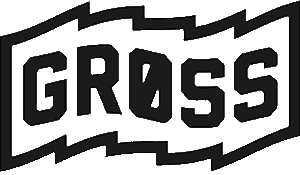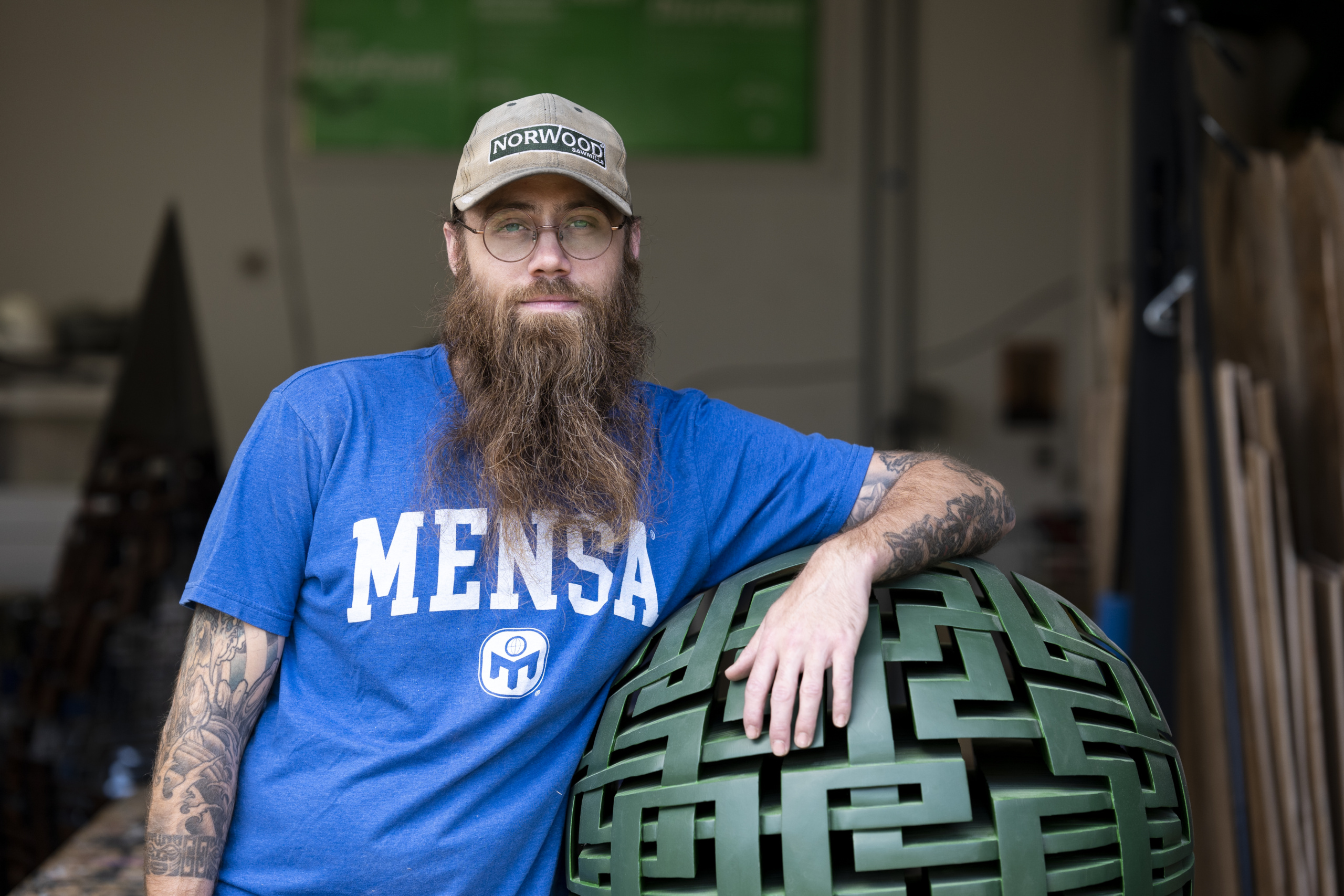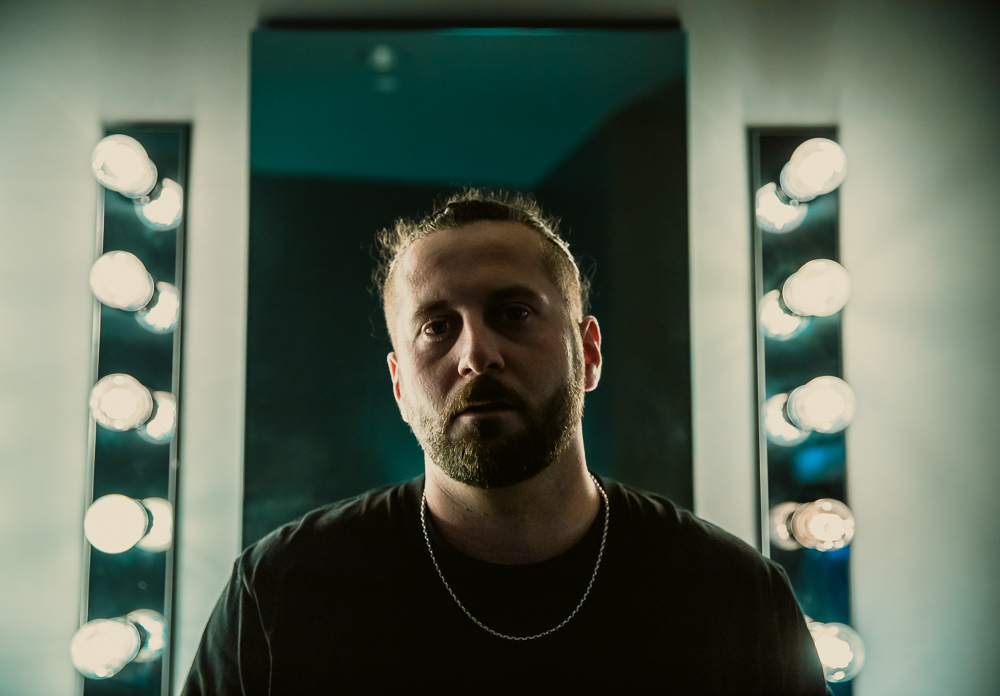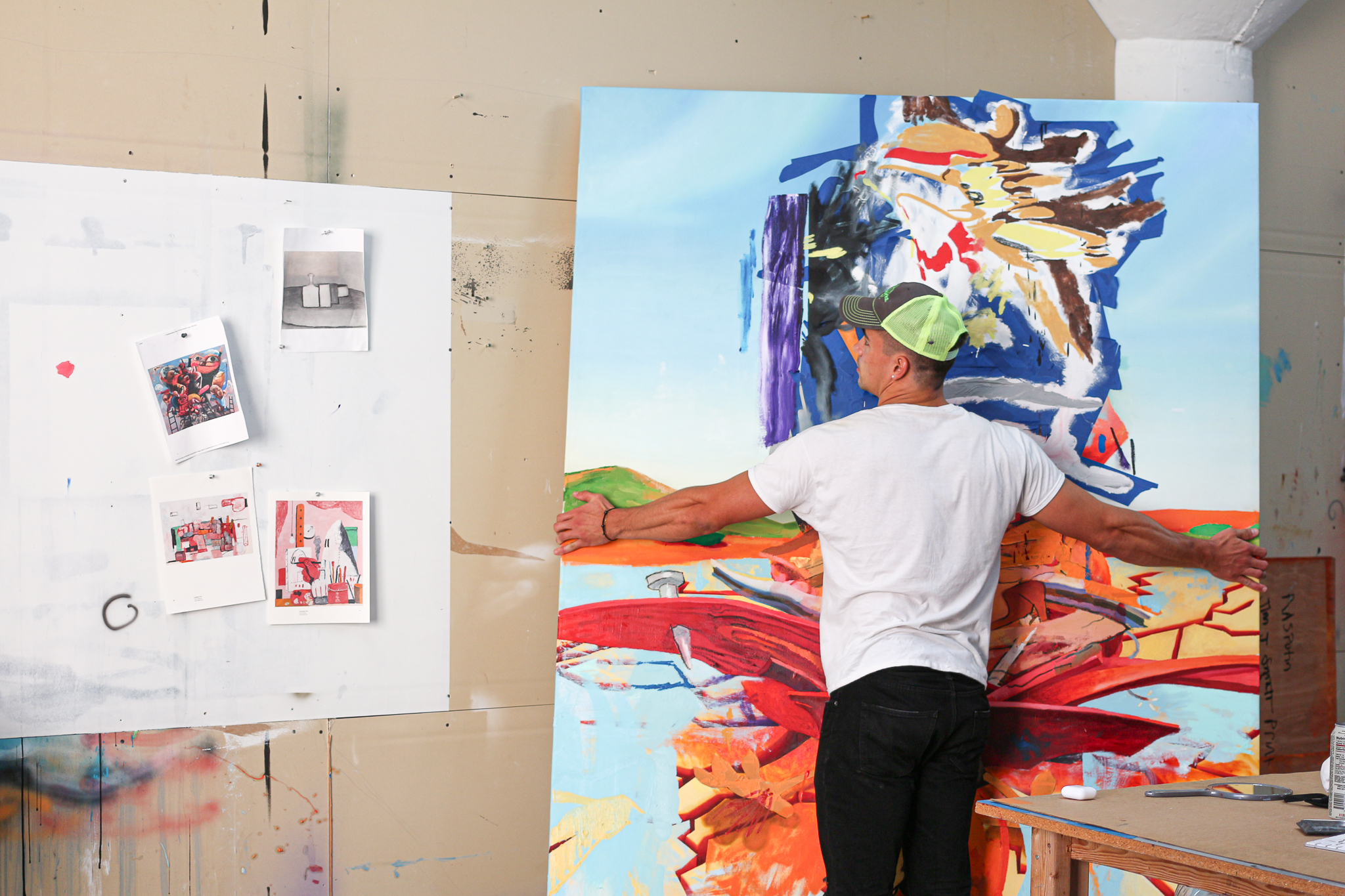Vancouver’s Mark Ollinger has trudged down the weeds into his own trail. As a sculptor, yeah, but also as an experimenter of mediums, a math head of sorts, a billiard enthusiast, and an advocate for a world of loving acceptance and connection that steers clear from the Canada Council of the Arts’ political agenda. From meeting our very own founder Vic from Gross over a decade ago while illegally installing street sculptures (shhhhh, don’t be a narc), to recently getting a new studio space in New York, Ollinger has always put his path in fate’s hands. We were lucky to be able to peep over the fence into Ollinger's world, exploring the depths of his inspiration, the beautiful mess of juggling a handful of projects, and his vision for the future.

Feeling at Home in the Hustle
Ollinger's creative process is a symphony of controlled chaos. A system for wrangling multiple projects at any given moment. "I tend to work on multiple projects at a time, usually having 4-8 on the go," he shares. But this isn’t a bad habit; Ollinger sees it as a mirror to life's beautiful mess. "I feel like I have forgotten what it feels like at this point, just a never-ending process like life".
Connection with craft is deeply personal, having, as he says, "followed the materials back to harvesting the wood myself, starting with a tree trunk and milling the wood into sheets". This intimate involvement with his medium is a hallmark of his artistic journey.
The Evolution Revolution
Ollinger's journey has been one of constant ebb and flow. "I've been fortunate to find myself constantly evolving with my design and craft abilities," he reflects. He began as a painter, but eventually found his calling in sculpture through pivot moments like figuring out panel work and freestanding design which helped sculpt (pun intended) his whole craft and what the potential of new equipment can spark in the future.
Ollinger isn’t known to scrap pieces, he’s in it for the ride. “I think I’ve finished 99% of what I’ve started. There’s been a few I’ve never shown and decided to shelve and a couple I’ve destroyed after finishing, but at this point I'm pretty good at visualizing what it'll be like and am almost always happy with how they turn out.” he says.

Heart of the Work
Ollinger's sculptures aren’t just easy on the eyes; they're visual stories about this carousel of life. "The Apathism idea is an attempt to create an image of the phenomenon of a human life spanning time," he explains. The choice of materials, particularly wood, is deliberate. "With that in mind being the foundation of the work, wood with the rings of the tree being the visual lifespan of the tree, tends to be the best material for the idea in my opinion," Ollinger shares.
His signature "intersecting lines and undulating shapes," have weight to them. "The weaving of the line over and under itself in different locations of the works are meant to represent circumstances in life both positive and negative occurrences," he elaborates, leaning back on the "karmic balance of life".
Art for Arts sake
Ollinger sees art as a powerful connector. "Art is the ultimate gap bridger," he asserts. He speaks from personal experience, acknowledging how art has transformed his own life and through his work, Ollinger has connected with people from all over, emphasizing that “it's my honest attempt to see the world objectively and focus on the fundamental structures and make the human experience universal, the things we all have in common are the things we all experience the same. Like gravity and density and other non subjective components of the human experience. It's through my work that I have found empathy and feel connected to the world around me and my fellow human beings.”
But this connection has been feeling somewhat fleeting when it comes to his home in Canada. “I have a whole theory on Canadian art now and the use of Canada Council of the Arts to politicize the vast majority of the art coming from here that the art scene doesn't really like. I see a lot of propaganda in the form of artwork these days and the use of the grant program to influence the politicization of messages about the work.” He explains, “The vast majority of Canadian artists rely on grants up here and I think that has been detrimental. I feel like I'm the only person calling this out. A lot of people feel the same way but are too worried about their career to speak out. It's actually crazy.”

He has a unique parallel of math and art – “all abstract artworks are process based and in order to create a cohesive body of work you must develop a similar process of production, and that brings us into formal systems and the foundations of math.” Ollinger doesn’t “see a line between artistic exploration and scientific inquiry at this point.” To him it’s an equation, “mathematics is the language of nature and everything fundamentally is mathematics”.
Looking Ahead
Ollinger's journey is far from over. With the new studio space in New York, he’s eager to immerse himself in the city. "I'm planning on working my way down there!" he exclaims. With new materials he’s eyeing, he's ready to "scale up and start working on some larger than life pieces".

Photos by Lia Crowe, courtesy of the artist














You must be logged in to post a comment.